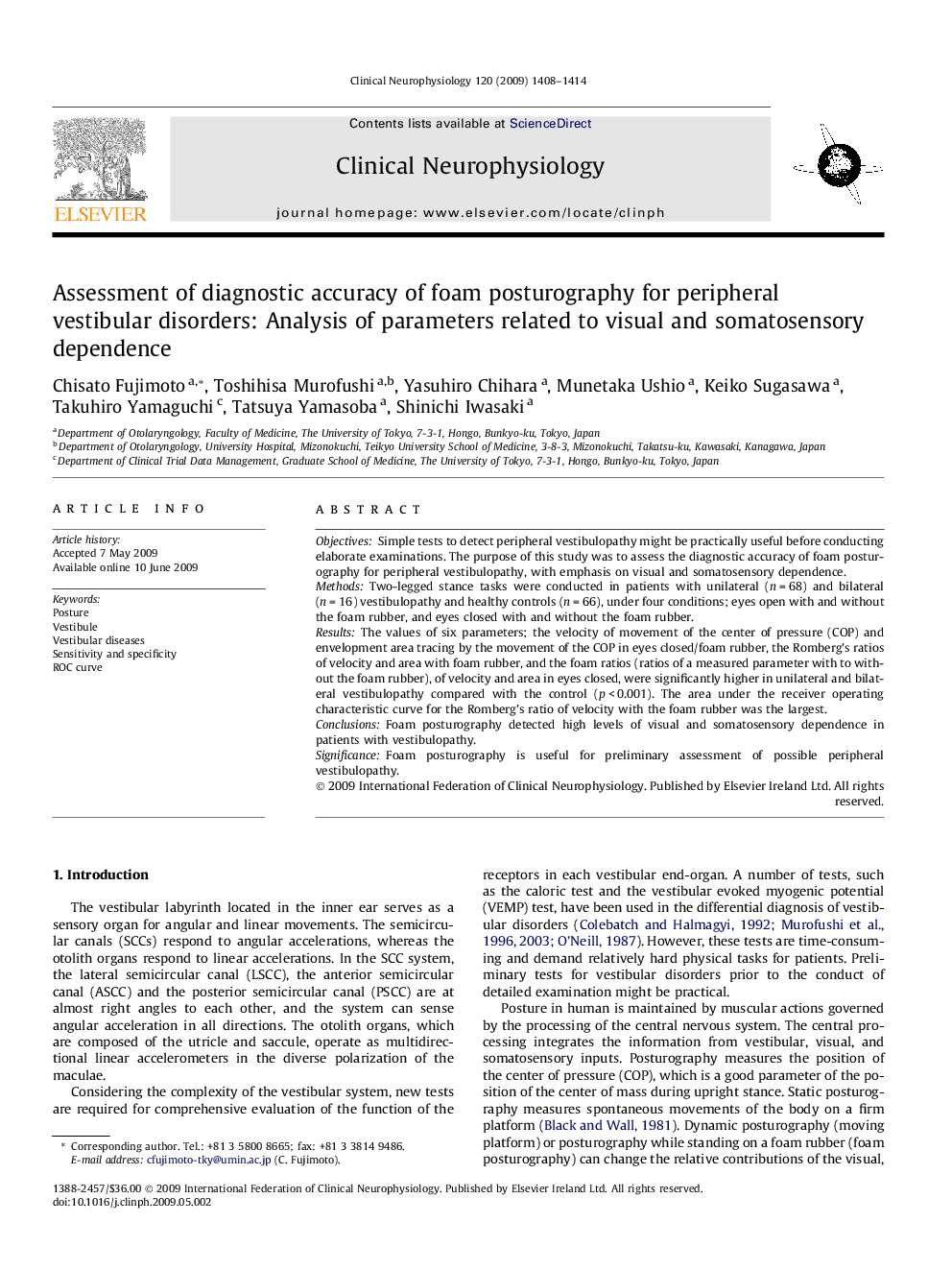| Article ID | Journal | Published Year | Pages | File Type |
|---|---|---|---|---|
| 3046576 | Clinical Neurophysiology | 2009 | 7 Pages |
ObjectivesSimple tests to detect peripheral vestibulopathy might be practically useful before conducting elaborate examinations. The purpose of this study was to assess the diagnostic accuracy of foam posturography for peripheral vestibulopathy, with emphasis on visual and somatosensory dependence.MethodsTwo-legged stance tasks were conducted in patients with unilateral (n = 68) and bilateral (n = 16) vestibulopathy and healthy controls (n = 66), under four conditions; eyes open with and without the foam rubber, and eyes closed with and without the foam rubber.ResultsThe values of six parameters; the velocity of movement of the center of pressure (COP) and envelopment area tracing by the movement of the COP in eyes closed/foam rubber, the Romberg’s ratios of velocity and area with foam rubber, and the foam ratios (ratios of a measured parameter with to without the foam rubber), of velocity and area in eyes closed, were significantly higher in unilateral and bilateral vestibulopathy compared with the control (p < 0.001). The area under the receiver operating characteristic curve for the Romberg’s ratio of velocity with the foam rubber was the largest.ConclusionsFoam posturography detected high levels of visual and somatosensory dependence in patients with vestibulopathy.SignificanceFoam posturography is useful for preliminary assessment of possible peripheral vestibulopathy.
